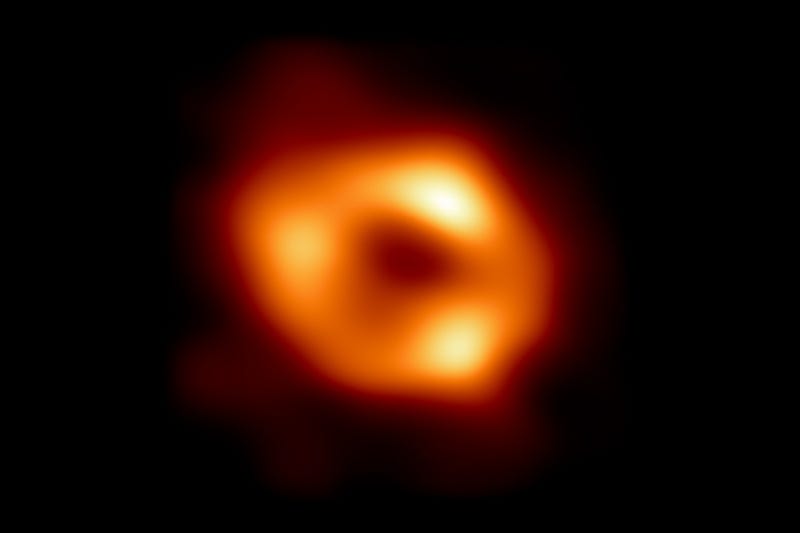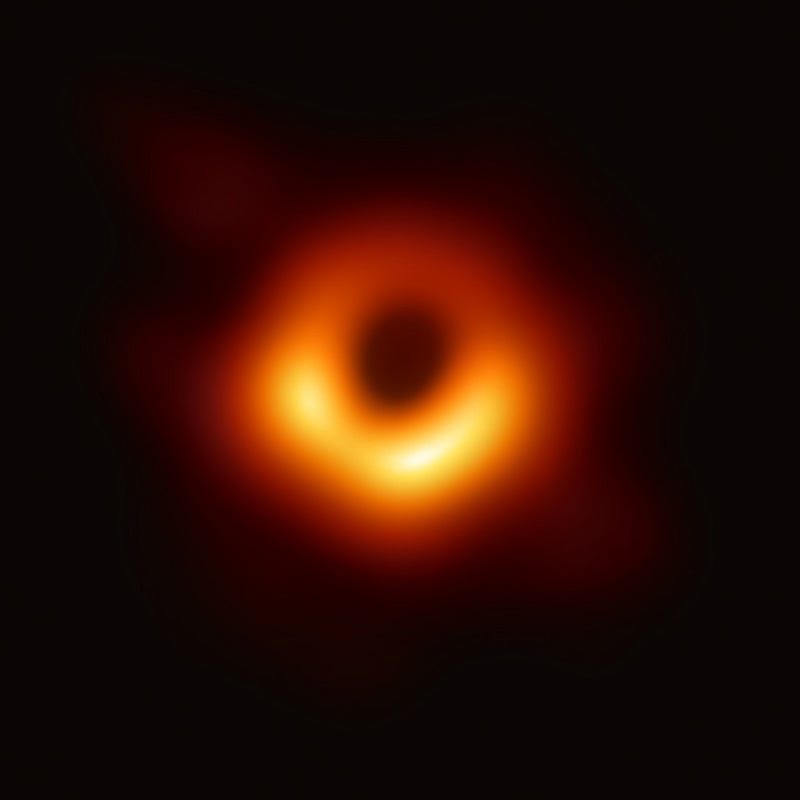Unveiling Sagittarius A*: The First Image of Our Galactic Black Hole
Written on
Introduction to Sagittarius A*
On May 12th, a significant press conference took place at the European Southern Observatory in Germany. The Event Horizon Telescope (EHT) project revealed the very first image of Sagittarius A*, the mysterious black hole located at the core of our galaxy. This image captures a swirling ring of orange light encircling the black hole, which possesses a mass over four million times that of our sun and lies approximately 26,000 light-years away in the Milky Way.

The groundbreaking image was the result of collaboration among hundreds of astronomers using a global network of eight radio telescopes. These instruments worked diligently to peer through the plasma and interstellar debris obscuring the center of our galaxy. Notably, these same telescopes had previously captured the first-ever image of a black hole in 2019, revealing the supermassive black hole in the M87 galaxy.
Understanding Black Holes
It is important to clarify that black holes themselves are invisible, as they do not emit light. When we talk about "seeing" a black hole, we refer to capturing the glowing ring of light surrounding its event horizon. Beyond this point, light is trapped and cannot escape into space. The luminous ring highlights the black hole's "shadow," which represents the most extreme phenomena known in the universe.
The intense plasma encircling the black hole can reach temperatures of up to 10 billion Kelvin (18 billion degrees Fahrenheit) and orbits a compact region roughly the size of Mercury's orbit around our sun. The surrounding matter is highly dynamic, changing as frequently as every five minutes during observations. In contrast to the larger M87 black hole, which has a mass of approximately 6.5 billion suns, Sagittarius A* is significantly smaller—less than one-thousandth of M87's mass—allowing it to change much more rapidly.

The Structure of Sagittarius A*
In their efforts to create this new image, researchers needed to discern which aspects of the black hole were stable and which were more variable. The aim was to uncover the underlying structure of Sagittarius A*.
The findings demonstrated that despite the significant differences in size and mass between the two black holes, they appear remarkably similar when viewed through a telescope. Interestingly, the data for both Sagittarius A* and M87* was collected simultaneously in 2017. However, the smaller size of Sagittarius A* posed challenges that delayed the formation of its image, as the plasma surrounding our galaxy’s center can distort the data.
As Chi-kwan Chan, an EHT scientist, noted, “The gas near the black holes travels at speeds nearly that of light. While it takes days or weeks to orbit the larger M87*, Sagittarius A* completes its orbit in just minutes, leading to rapid changes in brightness and patterns.”
The Data Journey
Though astronomers had previously noted stars orbiting Sagittarius A*, direct visual evidence of the black hole had yet to be obtained. The collaboration between M87* and Sagittarius A* resulted in 5 petabytes of data, which had to be distributed between two institutions—the Haystack Observatory and the Max Planck Institute for Radio Astronomy—for calibration. Various algorithms were employed to generate thousands of images from the raw data, with the average of these images forming the official representation of Sagittarius A*.
Each image contributes to our understanding of these extraordinary celestial objects, reinforcing predictions stemming from Einstein’s theory of relativity, which posits that black holes are the remnants of colossal, dying stars. The EHT aims to expand its network of telescopes in the coming years, enabling further imaging of black holes. Currently, the images we have are somewhat blurry and only capture the brightest regions; future advancements may allow us to see more subtle features that remain elusive for now.
Exploring Further
This video discusses how astronomers successfully captured the first-ever image of a black hole, shedding light on the complexities involved in such groundbreaking work.
In this video, explore the significance of finally obtaining an image of the Milky Way's supermassive black hole, deepening our understanding of galactic dynamics.